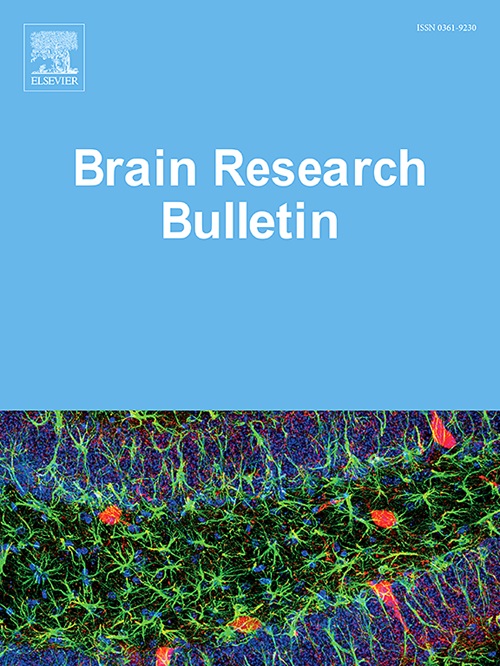Working-memory load decoding model inspired by brain cognition based on cross-frequency coupling
IF 3.5
3区 医学
Q2 NEUROSCIENCES
引用次数: 0
Abstract
Working memory, a fundamental cognitive function of the brain, necessitates the evaluation of cognitive load intensity due to limited cognitive resources. Optimizing cognitive load can enhance task performance efficiency by preventing resource waste and overload. Therefore, identifying working memory load is an essential area of research. Deep learning models have demonstrated remarkable potential in identifying the intensity of working memory load. However, existing neural networks based on electroencephalogram (EEG) decoding primarily focus on temporal and spatial characteristics while neglecting frequency characteristics. Drawing inspiration from the role of cross-frequency coupling in the hippocampal region, which plays a crucial role in advanced cognitive processes such as working memory, this study proposes a Multi-Band Multi-Scale Hybrid Sinc Convolutional Neural Network (MBSincNex). This model integrates multi-frequency and multi-scale Sinc convolution to facilitate time-frequency conversion and extract time-frequency information from multiple rhythms and regions of the EEG data with the aim of effectively model the cross-frequency coupling across different cognitive domains. Due to its unique structural design, the proposed model proficiently extracts features in temporal, frequency, and spatial domains while its feature extraction capability is validated through post-hoc interpretability techniques. On our collected three-class working memory dataset, the proposed model achieved higher classification accuracy compared to other state-of-the-art methods. Furthermore, by analyzing the model’s classification performance during different stages of working memory processes, this study emphasizes the significance of the encoding phase and confirms that behavioral response does not accurately reflect cognitive load.
基于交叉频耦合的脑认知启发的工作记忆负荷解码模型。
工作记忆是大脑的一项基本认知功能,由于认知资源有限,需要对认知负荷强度进行评估。优化认知负荷可以防止资源浪费和过载,从而提高任务绩效效率。因此,确定工作记忆负荷是一个重要的研究领域。深度学习模型在识别工作记忆负荷强度方面显示出了显著的潜力。然而,现有的基于脑电图解码的神经网络主要关注时间和空间特征,而忽略了频率特征。海马体区域的交叉频率耦合在工作记忆等高级认知过程中起着至关重要的作用,本研究从其作用中获得灵感,提出了一种多频段多尺度混合Sinc卷积神经网络(MBSincNex)。该模型结合多频、多尺度Sinc卷积进行时频转换,从脑电数据的多个节律和区域中提取时频信息,有效模拟不同认知域的跨频耦合。由于其独特的结构设计,该模型能够熟练地提取时间、频率和空间域的特征,并通过事后可解释性技术验证了其特征提取能力。在我们收集的三类工作记忆数据集上,与其他最先进的方法相比,所提出的模型取得了更高的分类精度。此外,通过分析模型在不同工作记忆过程阶段的分类表现,本研究强调了编码阶段的重要性,证实了行为反应并不能准确反映认知负荷。
本文章由计算机程序翻译,如有差异,请以英文原文为准。
求助全文
约1分钟内获得全文
求助全文
来源期刊

Brain Research Bulletin
医学-神经科学
CiteScore
6.90
自引率
2.60%
发文量
253
审稿时长
67 days
期刊介绍:
The Brain Research Bulletin (BRB) aims to publish novel work that advances our knowledge of molecular and cellular mechanisms that underlie neural network properties associated with behavior, cognition and other brain functions during neurodevelopment and in the adult. Although clinical research is out of the Journal''s scope, the BRB also aims to publish translation research that provides insight into biological mechanisms and processes associated with neurodegeneration mechanisms, neurological diseases and neuropsychiatric disorders. The Journal is especially interested in research using novel methodologies, such as optogenetics, multielectrode array recordings and life imaging in wild-type and genetically-modified animal models, with the goal to advance our understanding of how neurons, glia and networks function in vivo.
 求助内容:
求助内容: 应助结果提醒方式:
应助结果提醒方式:


